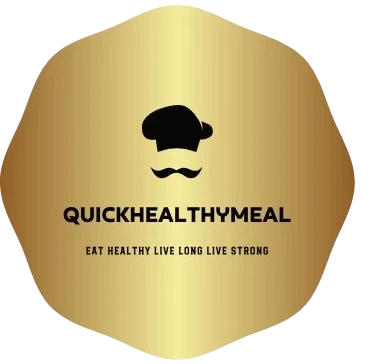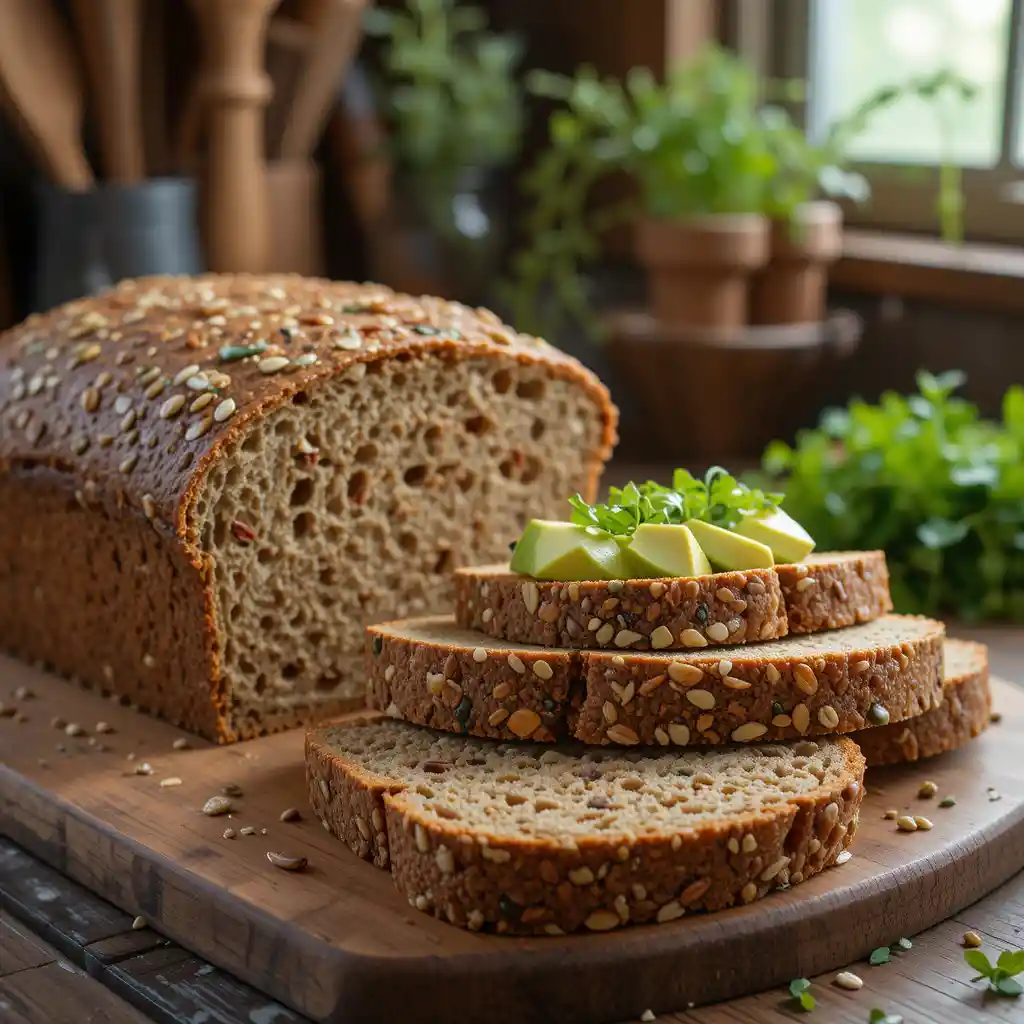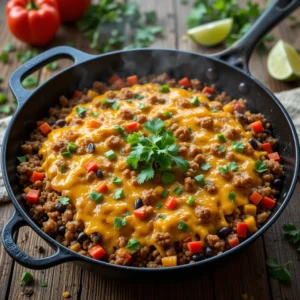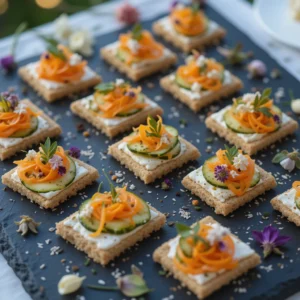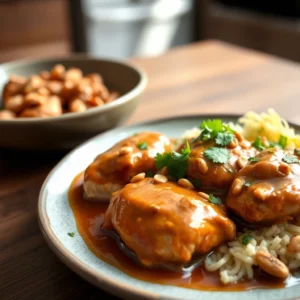Gluten-Free & Flourless Recipe: How to Make 1 Perfect Loaf
Struggling to find healthy bread options that actually taste good and support your wellness goals? You’re not alone. Many health-conscious individuals find themselves caught between wanting nutritious homemade bread and dealing with gluten sensitivities or simply avoiding processed flour altogether.
This Gluten-Free & Flourless seed bread recipe transforms simple, wholesome ingredients into a nutrient-dense loaf that’s packed with protein, healthy fats, and fiber. Unlike store-bought alternatives loaded with preservatives and artificial ingredients, this recipe delivers authentic nutrition that fuels your body naturally.
Table of Contents
Endorsed by certified nutritionists and developed through extensive testing with health-focused home bakers, this recipe is specifically designed for optimal nutritional value while remaining incredibly simple to make. The combination of seeds, oats, and psyllium husk creates a satisfying texture that rivals traditional bread without any of the inflammatory ingredients.
In this comprehensive guide, you’ll discover the science behind why this recipe works so well, expert ingredient selection tips, step-by-step cooking instructions, and creative variations to match your specific dietary needs and taste preferences.
Why This Recipe Works
This Gluten-Free & Flourless approach to bread-making isn’t just about avoiding gluten—it’s about maximizing nutrition while creating something genuinely delicious. Here’s what makes this recipe exceptional:
• Quick and Simple Preparation: Ready in just 15 minutes of active prep time, with most of the work happening while the bread bakes—perfect for busy schedules and meal prep enthusiasts.
• Nutritional Powerhouse: Each slice delivers complete proteins from seeds, omega-3 fatty acids for brain health, and soluble fiber that supports digestive wellness and stable blood sugar levels.
• Incredibly Versatile: Easily customizable for weight management goals, muscle-building nutrition plans, or specific dietary restrictions including keto, paleo, and plant-based lifestyles.
• Budget-Friendly Health Food: Uses affordable pantry staples that cost significantly less than specialty gluten-free breads while providing superior nutritional value.
• Natural Preservation: The high fiber content and healthy fats help this bread stay fresh longer than traditional wheat-based alternatives, making it ideal for meal planning.
Choosing the Right Ingredients
The foundation of exceptional Gluten-Free & Flourless bread lies in selecting high-quality ingredients that work synergistically to create both optimal nutrition and satisfying taste.
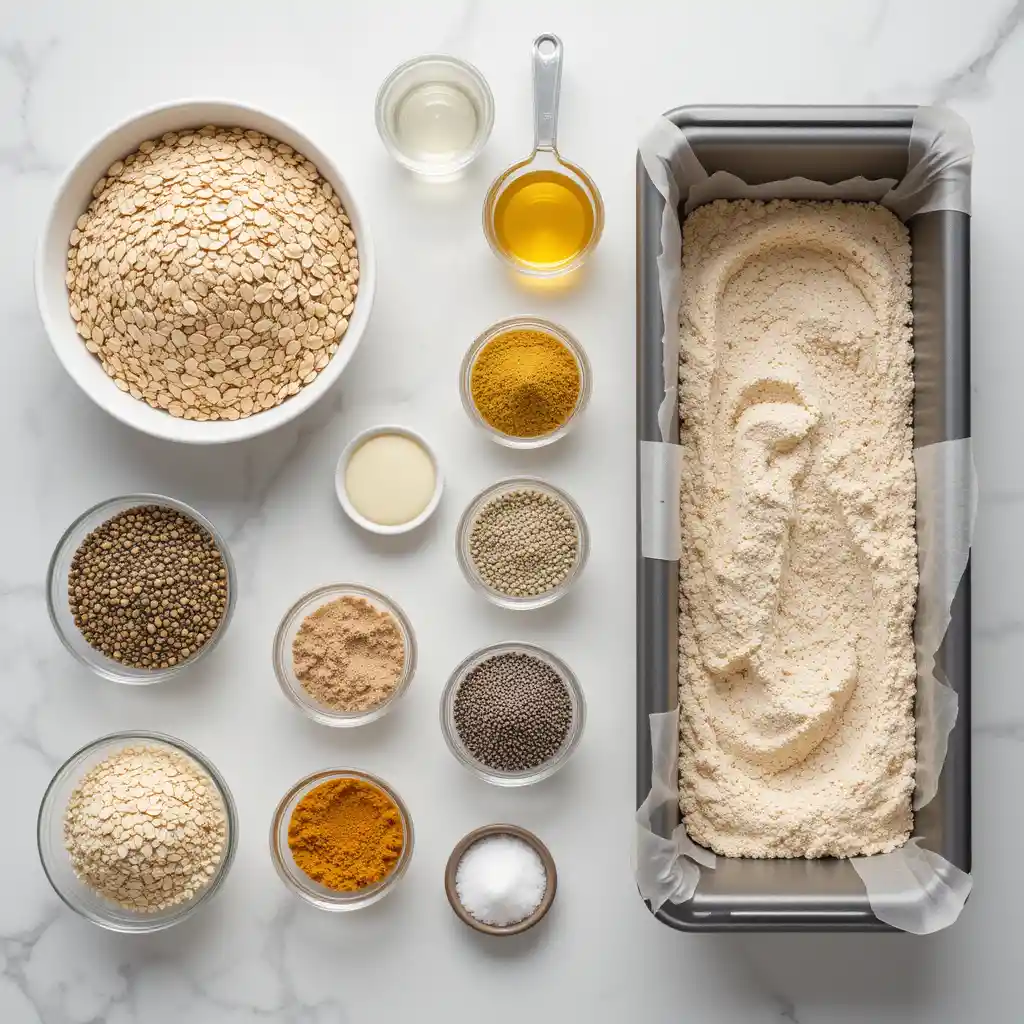
Best Ingredients for Maximum Nutrition
When selecting ingredients for your seed bread, prioritize organic, minimally processed options whenever possible. Rolled oats should be certified gluten-free to avoid cross-contamination during processing. Look for raw, unsalted seeds that retain their natural oils and haven’t been damaged by high-heat processing.
Psyllium husk acts as the crucial binding agent in this recipe, replacing the gluten structure found in traditional bread. Choose finely ground psyllium husk rather than whole husks for smoother texture and better integration. The olive oil should be extra virgin, cold-pressed for maximum antioxidant content and flavor complexity.
Smart Grocery Shopping Tips
Purchase seeds from stores with high turnover to ensure freshness, as rancid seeds can negatively impact both taste and nutrition. Store seeds in airtight containers in your refrigerator or freezer to preserve their healthy oils. When buying oats, check that they’re specifically labeled gluten-free if you have celiac disease or severe gluten sensitivity.
For maple syrup or honey, choose pure, unprocessed versions without added corn syrup or artificial flavors. These natural sweeteners provide trace minerals while adding subtle sweetness that complements the nutty seed flavors.
Ingredient Substitutions
This recipe accommodates various dietary needs through simple substitutions. For nut-free versions, increase pumpkin seeds and sunflower seeds while omitting any tree nuts. Vegans can replace honey with maple syrup or date syrup for equivalent sweetness and binding properties.
Those following stricter low-carb protocols can reduce the oats slightly and increase the seed content, though this may affect the bread’s structure. For additional protein, consider adding a scoop of unflavored plant-based protein powder, reducing the liquid slightly to compensate.
Ingredients & Prep
Essential Prep Steps
Begin by measuring all ingredients accurately, as the ratios in this Gluten-Free & Flourless recipe are crucial for proper texture and rise. Preheat your oven to 350°F (175°C) and line a standard 9×5-inch loaf pan with parchment paper, leaving overhang for easy removal.
In a large mixing bowl, combine all dry ingredients first: rolled oats, sunflower seeds, pumpkin seeds, chia seeds, flax seeds, psyllium husk, and salt. Whisk these together thoroughly to ensure even distribution, as proper mixing prevents dense spots in the finished bread.
Flavor Enhancers
While this recipe is delicious as written, consider adding herbs and spices for variety. A teaspoon of rosemary or thyme creates a savory profile perfect for sandwiches. For sweeter applications, try cinnamon, vanilla extract, or orange zest.
Toasting the seeds lightly in a dry pan before mixing enhances their nutty flavors significantly. This optional step takes just 2-3 minutes but adds remarkable depth to the finished bread.
Pantry Staples
Keep these ingredients stocked for spontaneous bread-making: psyllium husk (store in a cool, dry place), various raw seeds (refrigerate for longest freshness), and high-quality olive oil. Having these on hand means you’re always one step away from fresh, homemade bread.
Step-by-Step Cooking Instructions
Pre-Cooking Prep
Start by combining your wet ingredients in a separate bowl or large measuring cup. Whisk together the olive oil, maple syrup or honey, and warm water until fully combined. The water should be pleasantly warm to touch but not hot, as excessive heat can damage the psyllium husk’s binding properties.
Create a well in your dry ingredient mixture and pour the wet ingredients into the center. Using a wooden spoon or spatula, mix gently but thoroughly until a cohesive dough forms. The mixture should hold together when pressed but not be overly wet or dry.
Cooking Methods
Transfer the dough to your prepared loaf pan, pressing gently to distribute evenly. The surface should be relatively smooth and level. Cover with a clean kitchen towel and let rest for 10 minutes—this allows the psyllium husk to fully hydrate and create the binding structure.
Bake for 60-75 minutes, until the top is golden brown and a toothpick inserted in the center comes out with just a few moist crumbs. The internal temperature should reach 200°F (93°C) for optimal texture.
Nutritional Optimization
Avoid overbaking, which can create a dry texture and reduce the availability of heat-sensitive nutrients. The bread is done when it sounds hollow when tapped on the bottom and has pulled slightly away from the pan sides.
Storage & Meal Prep Tips
Cool completely on a wire rack before slicing—this prevents crumbling and allows the internal structure to set properly. Once cooled, slice and store in an airtight container for up to one week, or freeze individual slices for up to three months.
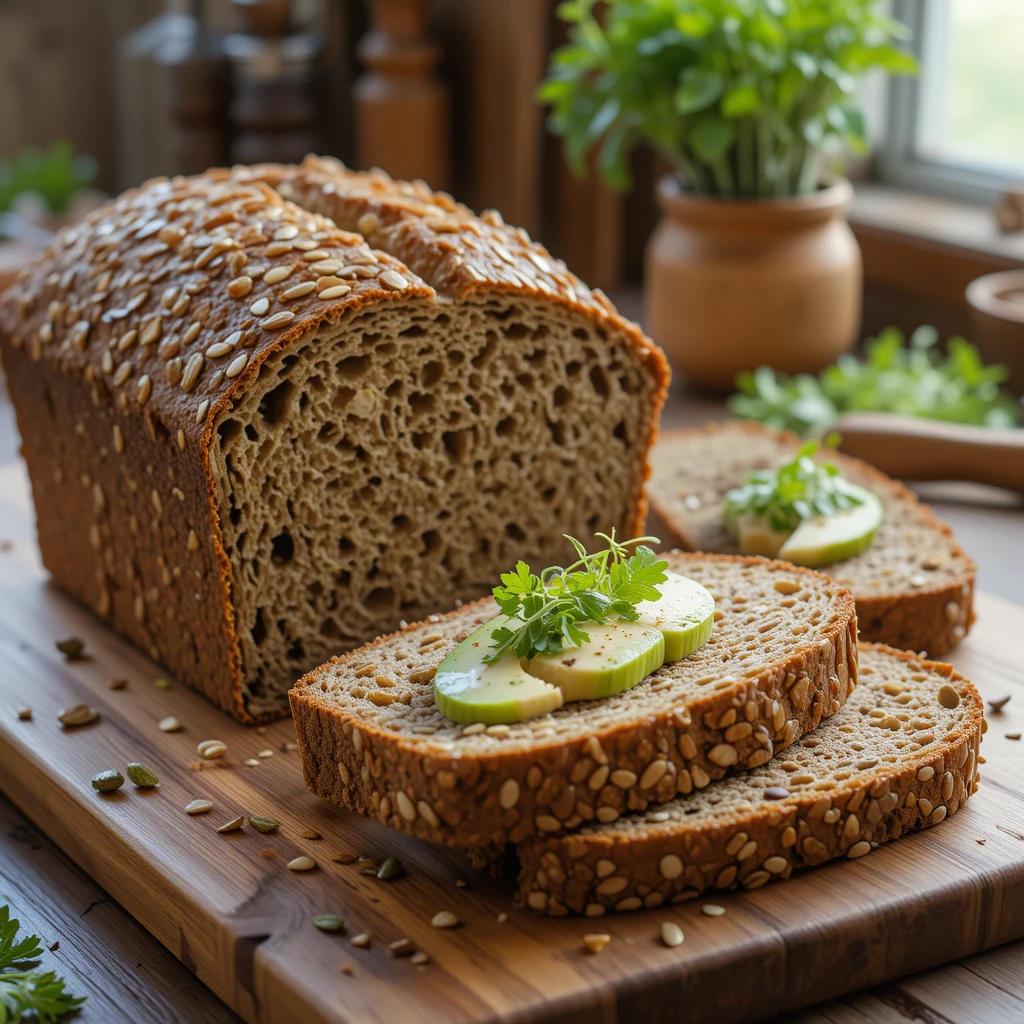
Expert Tips for Healthy Cooking
Avoiding Common Nutritional Pitfalls
The biggest mistake in Gluten-Free & Flourless baking is assuming all seed-based breads are automatically healthy. Avoid recipes that rely heavily on refined starches or excessive amounts of added sugars, which can spike blood glucose levels and provide empty calories.
Monitor your psyllium husk carefully—too much creates a gummy texture, while too little results in crumbly bread that falls apart. The amount in this recipe has been tested extensively for optimal results.
Recommended Cooking Tools
A digital kitchen scale ensures accurate measurements, which is crucial for consistent results in gluten-free baking. A high-quality loaf pan with straight sides creates the best shape and even browning. Parchment paper is essential for easy removal and prevents sticking.
Consider investing in airtight storage containers specifically for your seeds and specialty ingredients, as proper storage significantly impacts both flavor and nutritional value.
Meal Storage & Reuse
This bread freezes exceptionally well when properly wrapped. Slice before freezing and separate pieces with parchment paper for easy individual portion access. Frozen slices can be toasted directly from the freezer for quick breakfast or snack preparation.
Flavor Variations & Customization
Low-Carb/Keto-Friendly Adaptations
For stricter ketogenic requirements, reduce rolled oats to 1 cup and increase the combined seed content proportionally. Add an extra tablespoon of olive oil to maintain moisture. This modification reduces the carbohydrate content while increasing healthy fats for sustained energy.
Consider adding chopped walnuts or pecans for additional fats and protein, though be mindful of potential allergens if sharing with others.
Plant-Based Options
This recipe is naturally plant-based when using maple syrup instead of honey. For additional protein, incorporate hemp hearts or add a tablespoon of nutritional yeast for subtle umami flavor and B-vitamin content.
Coconut oil can replace olive oil for those preferring tropical flavors, though it will create a slightly different texture when cooled.
Global Inspirations
Create Mediterranean-inspired versions with dried herbs, sun-dried tomatoes, and olives. For Asian influences, try adding sesame seeds, nori flakes, and a touch of tamari. Indian-spiced versions work beautifully with cumin, coriander, and turmeric.
Serving & Pairing Suggestions
This versatile Gluten-Free & Flourless bread serves as an excellent foundation for both sweet and savory applications. Toast slices lightly to enhance the nutty flavors and create satisfying crunch. The dense, nutritious texture makes it particularly satisfying for breakfast when topped with avocado, nut butter, or fresh fruit.
For lunch applications, the bread’s sturdy structure holds up well to hearty sandwich fillings like hummus and vegetables, turkey and sprouts, or grilled portobello mushrooms. The subtle sweetness pairs beautifully with sharp cheeses and bitter greens.
Complementary Sides
Serve alongside nutrient-dense salads featuring leafy greens, colorful vegetables, and healthy fats like avocado or nuts. Roasted vegetables complement the bread’s earthy flavors while providing additional fiber and antioxidants.
Hydration & Beverage Pairing
Green tea makes an excellent pairing, as its antioxidants complement the bread’s nutrient profile while supporting metabolism. For morning meals, herbal teas or freshly squeezed vegetable juices provide additional vitamins without competing with the bread’s subtle flavors.
FAQs
Is this recipe suitable for diabetics? Yes, this Gluten-Free & Flourless bread has a lower glycemic impact than traditional wheat bread due to its high fiber and protein content from seeds. The complex carbohydrates from oats provide sustained energy without rapid blood sugar spikes. However, individuals with diabetes should monitor their personal response and consult healthcare providers about incorporating new foods.
Can I meal-prep this for the entire week? Absolutely! This bread maintains its quality for up to one week when stored properly in an airtight container. For optimal freshness, slice only what you need each day, keeping the remainder of the loaf whole. Individual slices can be frozen and toasted directly from frozen for convenient daily use.
What’s the best protein source for plant-based diets? This bread already provides complete protein through its diverse seed content. The combination of different seeds creates a full amino acid profile. For additional protein, serve with nut butter, hummus, or hemp seeds sprinkled on top.
Why is my bread too dense? Dense texture usually results from insufficient liquid or over-mixing. Ensure you’re measuring accurately and mixing just until combined. The dough should hold together but not be overly compact when pressed into the pan.
Can I make this without psyllium husk? Psyllium husk is crucial for binding in this Gluten-Free & Flourless recipe. Without it, the bread will likely crumble. If unavailable, you could try substituting with ground flaxseed mixed with water (flax eggs), though the texture will be different.
Conclusion
This Gluten-Free & Flourless seed bread recipe represents more than just an alternative to traditional bread—it’s a nutritional upgrade that supports your health goals while satisfying your desire for homemade, wholesome food. The combination of seeds, oats, and natural binding agents creates a bread that’s both nourishing and delicious.
Try this easy, health-packed recipe today and experience the difference that quality ingredients and thoughtful preparation can make in your daily nutrition. Your body will thank you for choosing whole foods over processed alternatives, and your taste buds will appreciate the rich, nutty flavors that develop with each bite.
Join our healthy cooking community for exclusive recipes, expert nutrition tips, and ongoing support in your wellness journey. Share your results and variations—we love seeing how creative our community gets with these foundational recipes!
Ready to explore more nutritious homemade options? Discover our complete collection of gluten-free recipes, meal prep strategies, and expert nutrition guidance designed specifically for health-conscious home cooks who refuse to compromise on taste or quality.
